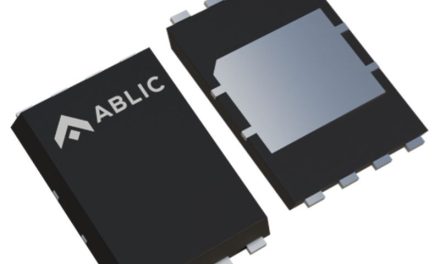 Jürgen Kühnel, Marketing Manager, for Precision Products at National Semiconductor Europe, explores the dimensions of a new family of Sensor-Analogue-Frontend (Sensor-AFE) -Precise Systems
Jürgen Kühnel, Marketing Manager, for Precision Products at National Semiconductor Europe, explores the dimensions of a new family of Sensor-Analogue-Frontend (Sensor-AFE) -Precise Systems
Up until now the design of sensor based applications required an optimised custom-tailored analogue solution for every system – a design effort that required many days or even weeks of work. To avoid having to start from scratch with every new task again and again – this involves selecting the relevant components and setting-up a prototype in order to create the layout afterwards and to then go through the test procedure for the first close-to-production PCBs. In response to this National Semiconductor has developed a solution consisting of hardware as well as software components.
This solution not only simplifies the design engineer’s work but also saves time during the design process. With an entirely new family of configurable precision Sensor Analogue Front End (Sensor AFEs) design engineers are able to create a solution for every new sensor within just a few hours.
Recently, the company introduced the first two devices of its Sensor AFE family: LMP90100 for temperature sensors as well as for slow bridge-configuration measurements and LMP91000 for gas sensors. These first two ICs are fundamentally different in their designs.
The gas sensor AFEs provide a highly complex combination of an 8-channel input multiplexer, a high-precision amplifier with adjustable gain factor and a 24-bit Delta-Sigma ADC. Current sources, voltage references and other functionalities complete the device. Figure 1 shows the IC’s internal structure: The user is able to match all the coloured blocks to the sensors used and to the measurement task.
Other functions may be switched on or off: The sensor monitor checking the sensors for shorts or breaks (open-circuit faults), or the offset calibration and the amplification. The latter is performed completely in the background without generating any artifacts on the output data stream.
Furthermore, in case of an external clock failure the clock supervision circuitry can be utilised in order to automatically switch over to use the internal clock supply.
As the multiplexer offers seven single-ended or four differential inputs it allows the additional connection of several sensors that may also be made based on different technologies. Good examples for this are a thermoelectric element in combination with an analogue temperature sensor located underneath the connector for the thermoelectric element, where the temperature sensor is used for cold-junction compensation.
Two thermoelectric elements with two analogue sensors or two three-wire measurement resistors or three thermistors may also be connected directly to this versatile component.
Doing so the sensor supervision is constantly able to check the sensors if needed. For a sensor check the supervision circuitry always screens just one single sensor, which is currently not in use for measurement tasks in order to avoid any disturbances of the measurement data stream.
Low current AFE gas sensor
The LMP91000 is purely an analogue solution with a very low current consumption, which makes it particularly suitable for portable applications. On average the device consumes less than 10µA, however, it will be able to drive currents of up to 10mA when new sensors are connected to it. The device may be attached either to sensors with two electrodes operating as galvanic cells or to sensors with three electrodes functioning according to the amperometric principle. When connected to a three-electrode sensor the AFE performs as a potentiostat while it also acts as a buffer when it is connected to galvanic cells (either against earth or against the reference voltage).
The sensor is equipped with three electrodes: Working Electrode (WE), Reference Electrode (RE) and Counter Electrode (CE). If gas gets in contact with the WE it will perform an oxidation or a reduction of the electrode, and this oxidation process creates a positive/negative current, whereas the absolute value of the current will change linearly with the gas concentration. Over time the electrode will be destroyed with increasing gas concentration. Therefore it is mandatory to replace the sensors on a regular basis. Every exchange of a sensor will change the current’s value, which will result in measuring errors.
When a sensor is put into operation for the very first time, the first step will be the build-up of the potentials. In order to do so the AFE sensor will drive up to 10mA. This will allow the completion of this procedure within just a few hours. In some cases, ordinary discrete circuits require several days to build up the potentials.
With its LMP90100 and LMP91000 devices National Semiconductor has introduced fully configurable analogue front end components for three types of sensors to the market. They represent the first members of a comprehensive family of sensor AFEs that will be introduced to the market step by step within the next two years.
Additional sensor AFEs are currently under development and the company intends to introduce solutions for ph value, ECG, CO2, and weighing cells. This family enables the designer to find a working solution within a very short time.
Furthermore, the AFEs may be adapted for changing operating conditions in the field, even after finishing the design. Whenever a sensor is changed (e.g. by replacing a thermoelectric element with a thermistor) the simulation can be performed rapidly in the lab and then afterwards it will be possible to send the configuration data by email, USB stick or remote maintenance to the measuring system.
This method delivers cost advantages over a discrete solution that would require replacement of the electronics components.


